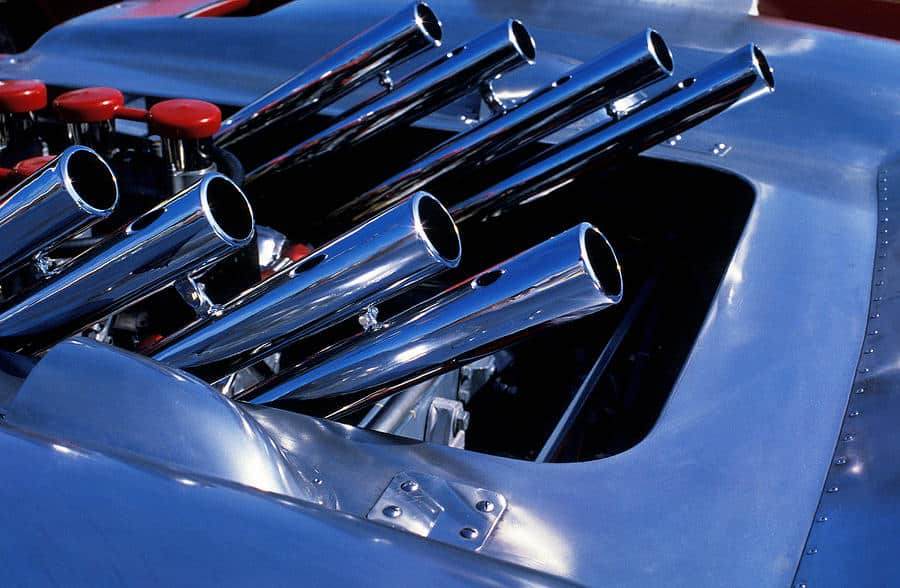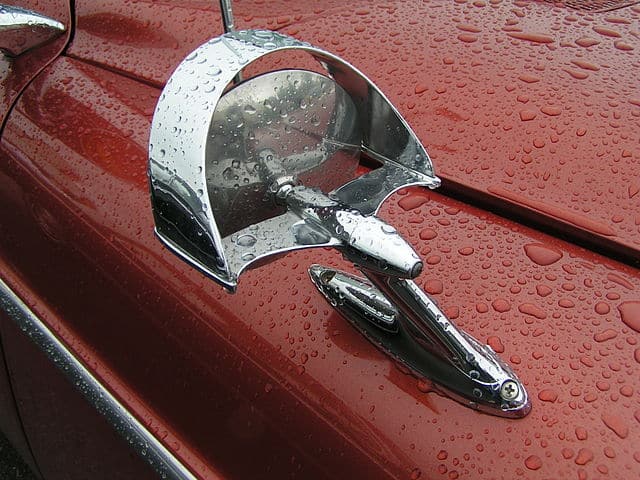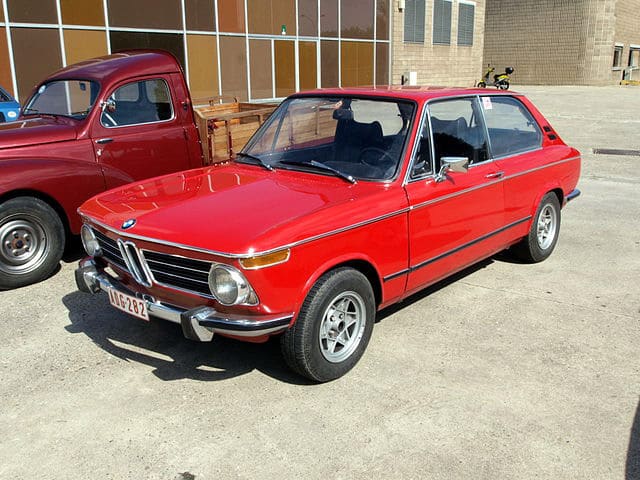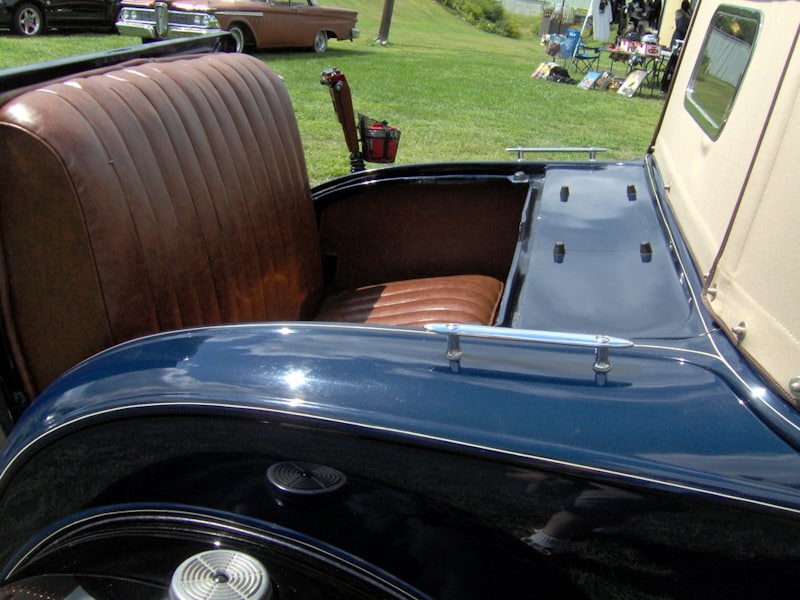There was a time in automotive manufacturing that even seatbelts weren’t a standard feature. As the years went by however, safety regulations became increasingly strict which made some features to become nonexistent.
From every corner of the globe, new safety and emission standards have emerged over the past decades. Some we can understand why the feature is no longer allowed, a couple of them… not so much.
10. Built-In Car Phones
We are semi-surprised to learn that built-in phones have been banned from production. You can drive up and down boulevards of any city and see countless drivers talking on their mobile phones. We agree that phone use should be required to be hands-free, so maybe that was the logic around eliminating the bulky brick phones that were once installed in luxury sedans.
9. Fender Mounted Mirrors
Fender mirrors were primarily an aesthetic feature in the Japanese market and really had no other purpose than looking cool. Unfortunately, they don’t provide the viewing that a door mounted sideview mirror does.
Not only that, but can you imagine trying to manually get them set up? Without a second person, you would be forced to make an adjustment to the mirror and then go sit back down in the driver’s seat to see if you got it right. Repeating that in-and-out process until you do.
8. Huge Chrome Bumpers
For many years, chrome was king in America! The more the better! That appealing trend was slowly phased out for safety purposes. It became mandatory that bumpers need to withstand much harder collisions in the 1970s. This requirement therefore led to the demise of the huge chrome by replacing it with a sturdier steel and aluminum bumpers typically wrapped in a plastic outer shell. We miss the chrome…
7. Ashtrays & Cigarette Lighters
We certainly do not miss the ashtrays in classic cars. Not sure who would smoke in their own anyway. The reasoning manufacturers removed them was to assist in enforcing the law where no person may smoke inside a car with a child inside the cabin. The cigarette lighter was often used as a power source for electronics, but that need for an outlet has since been updated to USB ports.
6. Dash Mounted Televisions
A lot of luxury cars have been fitted with TV screens in the back seat, typically in the headrests today, but the only TV we know of that was built into the dash belonged to a 1959-60 Cadillac, which was made up to be the 1960 Motorama Car of the future (which it was not). The set was modified to operate on 12 VDC.
Otherwise, these screens would have had to been installed as an aftermarket kit. There were (still are?) aftermarket radios that have screens on them that can play a movie or video on its display. This is clearly a bad distraction for any driver, and we can see why many countries around the world have outlawed them.
5. Skinny A-Pillars
This might not seem like a big deal, but many automotive designers cringed at the idea of having to bulk up the A-pillar which interfered with their streamlined designs.
The reasoning was safety. Vehicles with reinforced A-pillars can provide much more structural rigidity in the event of a crash or roll-over. Making them larger however created much larger blind-spots which some argue is a safety concern in itself. Manufacturers now have to balance safety, visibility and style which ultimately does lessen a vehicle’s appearance.
4. All Black Cars
It might sound ridiculous, but there is a country that has banned all black colored cars. It is illegal to own a black colored classic car in Turkmenistan because their President, Gurbanguly Berdymukhammedov, has banned them as he feels they are unlucky. They even go out of their way to impound the black cars they see in public. All citizens must either repaint or sell their black cars, no matter when or where the cars were built. Not sure how you can sell a black car if you can’t buy one. Sounds like a logical law… or no.
3. Rumble Seats
A rumble seat (American English), dicky seat (British English), also called a mother-in-law seat, is an upholstered exterior seat which folded into the rear of an early model vehicle. Depending on its configuration, it provided seating for one or two passengers.
Rumble seats are clearly a safety concern as they expose passengers were exposed to the elements and did not have seatbelts to keep people from being shot out like a canon in the event of an accident. Among the last American-built cars with a rumble seat were the 1938 Chevrolet, the 1939 Ford and 1939 Dodge and Plymouth.
2. Loud Exhausts
This loss is a hard pill to swallow for a lot of motorheads. Who doesn’t like the sound of a 246 HEMI engine? There are still aftermarket exhaust kits from companies like Flowmaster that produce exhausts that sound great and can give that throaty sound, you can forget about straight pipe exhaust.
Even some aftermarket exhaust kits are illegal depending on where you live. The loudest a vehicle can be is 95 decibels in California, and most stock factory exhaust systems, regardless of the make or model, will not exceed 75 decibels.
1. Pop-Up Headlights
Pop-up headlights make our number one spot as they were clearly the coolest feature that has now been banned. While these headlights aren’t technically illegal in the United States, it’s just has become too hard to design lights that follow the new rules.
There was a European study that deemed the pup-up headlights were too dangerous for pedestrian safety. They were considered to be too sharp and could seriously injure any pedestrian that was struck by the car. Although EU regulations don’t affect cars that are made in the US, it’s much easier for manufacturers to follow global rules to ensure a “one size fits all” scenario.
Please consider subscribing to our monthly email newsletter to keep up with everything that’s going on at the Wilson Auto Repair garage. Also, follow us on Instagram, @carmechanic, and sign up for a LIVE, one-on-one Zoom consultation with Barry Wilson, our master mechanic, to discuss any challenges you might face with your classic vehicle repair or restoration project. Finally, visit Wilson Auto.com to find the tools we use and recommend to you for your classic car project.
For more videos about classic car restorations, tips, and best practices, subscribe to our YouTube channel.










